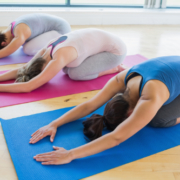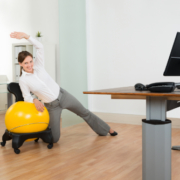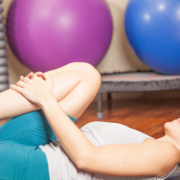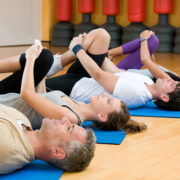3 Stretches Chiropractic Patients Can Do For Neck Pain
Stretching is often an outstanding complement to chiropractic care. Blood flow to the muscles is increased and it helps lower the risk of injury and improves physical performance. More importantly, stretching is good for the joints, helping them function through their full range of motion.
Additionally, some studies show that muscles work and move more effectively when they are stretched regularly. These benefits of stretching make it a great practice to incorporate into your daily routine, especially between chiropractic treatments.
The muscles all along the spine respond well to stretching. However, sometimes it is difficult to manipulate specific muscle groups and get an effective stretch.
The cervical spine is a prime example. Although the neck turns in so many ways, finding positions that provide an effective stretch are surprisingly difficult.
These three stretches effectively work the muscles through the neck and shoulders, and are simple enough to do at home whether you are between chiropractic appointments or if you wake up with a crick in your neck.
Before You Stretch
If you are under a chiropractor’s care, you should check with him or her before you start a stretching program. This is especially important if you have a neck injury or have a spinal condition that causes deterioration or pain.
When you begin stretching, you may feel a little discomfort, but it is important to note that it should never cause pain or worsen it. If this occurs, or if it just doesn’t feel “right,” you should stop immediately and call your chiropractor.
Neck and Trap Stretch
If standing: Stand up straight with your pelvis slightly tucked (not swayback), feet shoulder’s width apart, knees soft.
If sitting: Sit up straight with your feet flat on the floor.
1. Drop your shoulders and roll them slightly back. Let your arms hang down.
2. Reach behind your back and, with your left hand, grasp your right wrist. If you can’t reach to grasp your wrist, grab your fingers. If you can’t reach your fingers, sit in a straight back chair and put your right arm as far behind you as you can and slide your right hand under your right buttock to provide stability.
3. If clasping your hands behind you, gently pull your arm behind you to the left. If unable to reach behind you, drop your right shoulder.
4. At the same time, tilt your head to the left, bringing your ear to your shoulder but don’t raise your left shoulder. You will feel the stretch all along the right muscles of the neck.
5. Hold the stretch for 15 to 30 seconds.
6. Do the same movement for the left side.
7. Repeat the full move 3 to 5 times.
Gentle Neck Extension
If standing: Stand up straight with your pelvis slightly tucked (not swayback), feet shoulder’s width apart, knees soft, hands relaxed and at your sides.
If sitting: Sit up straight with your feet flat on the floor, hands relaxed and at your sides.
If lying down: Lie flat on the floor. If necessary, put a pillow under your knees to take pressure off of the lower back. Stretch your arms down by your side.
1. Push your shoulders down towards your feet.
2. Tuck your chin to your chest but don’t let your shoulders lift.
3. Slowly raise your chin, feeling the stretch along the front of your neck. Hold the position for 20 to 30 seconds.
4. Return your head to its normal, upright position for 30 seconds. Repeat the entire movement 5 to 7 times.
Stretch for Traps
If standing: Stand up straight with your pelvis slightly tucked (not swayback), feet shoulder’s width apart, knees soft, hands relaxed and at your sides.
If sitting: Sit up straight with your feet flat on the floor, hands relaxed and at your sides.
If lying down: Lie flat on the floor. If necessary, put a pillow under your knees to take pressure off of the lower back. Stretch your arms down by your side.
1. Start with your head in the normal, upright position.
2. Bend your neck to the right side, moving your ear towards your shoulder.
3. Raise your left hand to your head and apply gentle pressure to facilitate the stretch while drawing up your left shoulder. Hold for 20 seconds.
4. Return to your starting position.
5. Repeat the same movement on the right side.
6. Do 3 to 5 sets.
Follow us on social media or visit www.ocwc.ca for more health and wellness tips and information!






